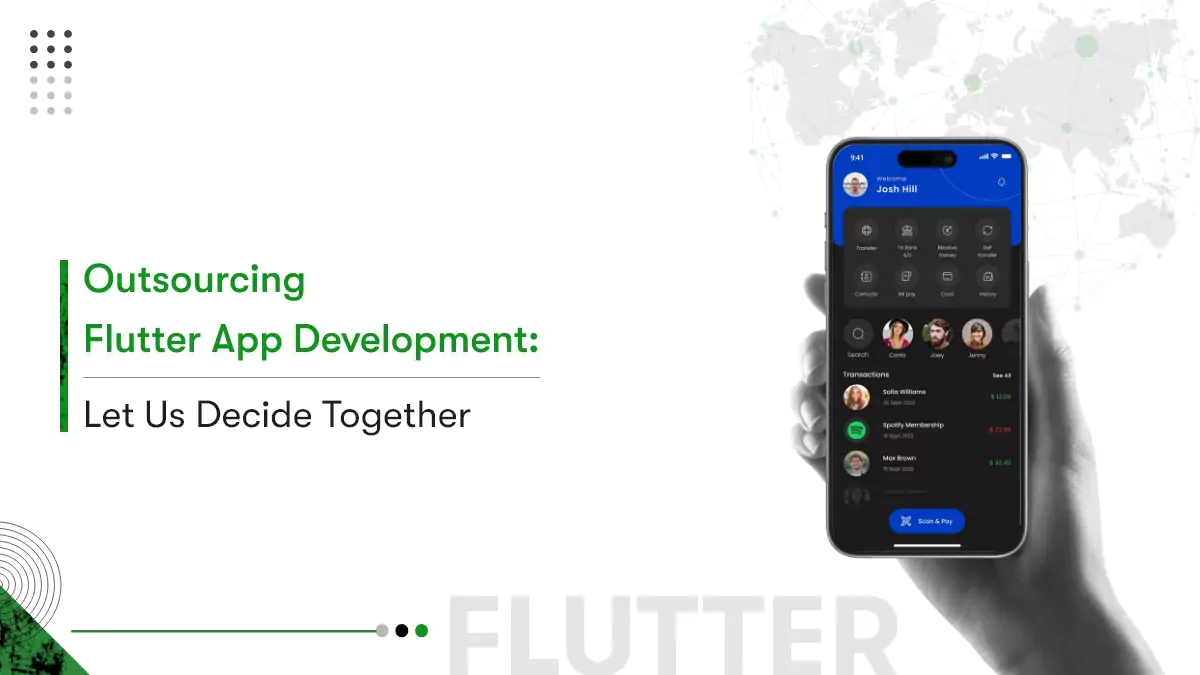“If you want to change the world, you don’t need to open a factory. You just need to open a laptop.” said Alexis Ohanian, co-founder of Reddit.
For decades, technology has been a driving force in the economy, spawning entire industries and creating opportunities for everyone. Today, the tech industry is rapidly growing with a host of emerging tech businesses with new startup ideas and solutions generating enormous amounts of revenue—this influences every other entrepreneur to think about building a tech startup.
The latest crop of startups is dominated by web giants such as Facebook and Google, but they also include young companies that offer products you never knew you needed, such as Uber and Airbnb. The sector is constantly growing, but the number of tech companies worldwide is at an all-time high. On the other hand, building a successful tech startup is becoming more challenging.
Industry infiltration is also why starting a tech business is now more challenging than ever before. Crossing the boundaries of computer software and hardware, tech-driven startups are popping up from every vertical of industry. Healthcare Tech, Delivery services, FinTech, e-learning, eCommerce, Supply Chain Management and Logistics, Real Estate, and Share mobility are among the top tech startup industries.
Some of the most profitable startups globally are tech startups that either don’t have a brick-and-mortar presence or a physical presence at all. But if you look closely, you’ll notice that even the world’s largest tech firms have built their businesses by crafting new solutions for new problems. Technology is iterative, and the constant introduction of new solutions creates competition.
So, if you are founding a digital startup, this guide will stand by your side. This explains how to execute your online business idea without requiring you to be in Silicon Valley. 😉
Examples of top tech startups around the world
Before plunging into how to build a successful tech startup, I thought we should analyze how current tech-driven startups are doing. Hence, to get you an inside scoop on situations in a business’s early stages, we curated a list of the below ventures. I want you to get some inspiration from them.
Learn how to look bigger from mCommerce startup, Button
Co-founder and Chief Product Officer at Button, Chris Maddern, believes pretending you are bigger and focusing on running a company professionally rather than chasing an ideal startup culture is a key to success. That is why Button has partnered with potential applications, including Hotels.com, Ticketmaster, Jet, and Uber, to facilitate seamless eCommerce purchases and mobile transactions. Partnering with more apps has helped the mobile commerce platform attract more funds and new partners.
Don’t be afraid to hear NO, says Baker
Baker is an industry-specific CRM platform for helping dispensaries offer a personalized cannabis shopping experience. Company’s CEO Joel Milton cited that raising money for a SaaS business targeting canna-businesses was never easy, implying startups to be ready to hear NO from investors. Milton advises startuppers to foster relationships with VCs and keep expanding their network until you secure your funding.
Learn to Build, Iterate, and Improve from HashiCorp
HashiCorp is a remote-first startup that solves development, security, and operations challenges by offering multi-cloud infrastructure automation products. Mitchell Hashimoto and Armon Dadgar, the company’s founders, suggest that startups be inventive in building, iterating, improving, and refining products to fit the target market. Don’t focus on just being better but 10X better at either usability, stability, features, or at least in one category.

How to build a successful tech startup?
Whether you are making an app from scratch or a SaaS product, your ultimate aim is to make money. And to make money, you need a market that needs the solution you offer. However, you need a good feature set that solves end-user pain points to address why the market should buy your product. Additionally, the pricing factor also needs to align with your market affordability.
You may need to spend money on market research for valuable information. And that is where the Lean Startup methodology comes in. The approach follows the “build-measure-learn” feedback loop that helps companies learn faster, build faster and get their product into customers’ hands more quickly. The lean startup method addresses the problems that plagued existing entrepreneurship education programs.
It is a philosophy and methodology used by tech startups to quickly validate and prove their ideas, build a small team, and gain traction. The lean startup approach encourages you to create a Minimum Viable Product (a product or service with the minimum features required to generate a profit or meet a goal) rather than an entire product or service.
This approach allows startups to quickly build a large amount of traction, which can provide validation for larger, more complex ideas. In other words, the Lean Startup method is a continuous cycle of product development, validation, and feedback. It is used to launch tech startups that are fast, flexible, and resilient.
1). Build an MVP the market wants
Building a successful tech startup requires a lot of hard work and dedication. However, your first step in launching a tech startup should be to create a Minimum Viable Product. Creating a Minimum Viable Product (MVP) is one of the most critical steps in starting a tech startup. An MVP is a product version that can be used to test a business idea or product before developing and investing in a complete product version.
By incorporating a few key features and testing your idea with users, you can learn a lot about whether your idea has potential. Or if you need to make further changes. MVP development allows you to test the concept with early adopters, generating valuable feedback that you can use to tweak your product and improve its value for future customers.
As a founder, your primary goal is to build a better product than what is currently available. And generating a small number of initial sales can help you realize this goal much faster than a celebrating launch.
2). Validate the solution with early adopters
After developing your minimum viable product, you need to ensure it starts attracting early adopters in the target market. Though having mere users won’t get you the money you need to carry out your product development process. Therefore, your priority should be to find paying customers, not investors. Once you have customers, you can go back to your investors and raise a substantial financing round.
To bring paying customers, however, you will need to focus on the marketing tactics that require little or no cost. For example, with the knowledge of social media, you can promote your product and reach your potential customers via social media marketing.
3). Build a skilled and talented founding team
Each team member’s expertise matters when you are starting a tech company on a low budget. Finding people who share your vision and who will add value to the product and community will be critical. This can be accomplished through a combination of local and online networking opportunities.
If you have the skills to code, you can start building the foundations for your tech startup. This will help you make an early prototype that you can take to your potential co-founders. If you are a non-technical founder, however, you can outsource the job to a cost-effective software development company. But ensure you choose the right app development company.
4). Release the product into a wider segment
When you have validated your MVP and established your founding team, it is time to introduce your product to a broader lump of your target market. Ad campaigns, market strategy, and an experienced sales team can be game-changers at this phase. Basically, you need to find places where your customers knock around online and get involved in the conversation.
Take Tinder, for example. Since it’s a hyperlocal app, it needed tons of users in proximate geographical areas during the pilot period. So, they threw a series of parties in California, making app installation mandatory for the entry. That’s how Tinder grew its user base to 15000 overnight.

5). Measure the right metrics
The app launch is the most exciting part of building a product. It’s when users finally get to discover your product, experience its features, and, hopefully, fall in love with it. However, launching a product is a complex and delicate process and often gets overlooked as a crucial aspect of building a successful business.
The wrong strategy, timing, or format can have a significant impact on the number of users your product gets, which can ultimately limit its potential and hurt your brand.
But how can you identify whether everything works well or where you need to improve? And if so, then how? That’s where measuring the right metrics comes in.
When you launch your app, you’ll want to measure the right metrics to see how people are interacting with it. Some of the most important things to measure are how many people opened your app, how many times they opened it, and how long they were active within it.
This will give you a good idea of how well your app is performing and whether or how much more you need to improve it. You should also measure how many people shared your app with their friends, which will help you build a larger user base and generate more in-app sales.
Below are some crucial metrics you can consider measuring after your startup app launch.
Mobile App Downloads
Basically, the number of app downloads signifies how many people know your brand and have installed your app from their OS app store. Thus, tracking download numbers is the simplest way to track brand popularity.
Uninstallations
Someone can uninstall your app for any reason and not always leave feedback. But by tracking uninstallations regularly, you can predict the cause if it occurs in clusters or whether it relates to a recent update or change in the app.
Registrations
Tracking the number of registrations allows you to track your customer locality, whether they place an order or add items to the cart and leave.
Daily Active Users (DAU)
It showcases how many people use your app daily. The number of daily active users assists you in evaluating your project’s current and strategizing future growth.
Monthly Active Users (MAU)
Like DAU, tracking monthly active users, you will know your unique visitors who operate the app once or twice a month.
Social Shares
You should track how many times your app is recommended on social media and work on enhancing the number.
Churn Rate
Churn rate indicates the ratio of app uninstallation from active users, which helps you learn and mend potential loopholes.
Average Revenue Per User (ARPU)
Tracking ARPU can be a big help in improvising app revenue. It tells you the average gain per user via orders, subscriptions, ad clicks, or other monetization forms you have integrated.
Time To First Purchase
Measuring this KPI tells you the time a user takes to make their first purchase on the platform.
Customer Acquisition Cost (CAC)
By dividing the gross revenue generated in a given time by the sales and marketing cost, you can know the average CAC. It suggests which marketing tactic works best for your project.
User Journey Mapping
Tracking a user’s journey allows you to empathize with your users and make your app even more user-friendly.
Screen Views Per Session
Measure how many unique screens a user visits per session, and the more screens, the better for your app.
6 Generate funding and scale
More often than not, entrepreneurs think getting funding is the first step to start. In reality, without product-market fit, bring early adopters, and iterate rapidly before executing any large-scale go-to-market strategy.
Once your tech startup is up and starts getting traction, you need to focus on scaling. And to expand your startup, you will require funding. Think of funding as the oxygen you breathe. It’s the air to keep your startup flame-lit, your ship steady, and your engine strong.
One of the best ways to get funding for a new startup is through crowdfunding. Crowdfunding has grown in popularity over the past few years with the advent of sites like Kickstarter, Indiegogo, and Fundly. The idea is you turn your idea into a campaign, and you ask for money from your family and friends. You can also try other ways to fund a startup app, such as Bootstrapping, Personal financier, Private investors, Angel investors, Crowdfundings, or Bank loans.

Things to keep in mind when planning to build a tech business
Taking it from an idea to a successful startup is not everyone’s cup of tea. Bad marketing and poor products are a few reasons why startups fail. On the contrary, not having a purpose, the right team, and money to survive the fierce competition causes major startup failures.
Hence, to avoid any chance of failure, we recommend thinking through the three factors below.
1). Mission & Passion
A mission and a passion are the two forces that drive startup founders to build something new and bold. A mission is a cause that you feel compelled to pursue, even when others doubt your ability to achieve it. A passion is an inner drive that propels you forward, even when the road ahead is full of obstacles. Together, they are what drive you forward when all else seems to fail you and what keeps you going when you feel like giving up.
When a founder has a clear idea of what their venture will accomplish and how it will make the world a better place, they can focus on building a great business. This is often the first step a founder takes toward building a great company. Over time, a founder’s passion and mission can become their company’s greatest asset.
2). The People
Hiring the right people is crucial to the success of a startup. The ability to work well with others is one of the most critical skills a startup needs, and having the right team members will help you achieve your goals. When hiring individuals, it’s essential to consider their experience, but also the direction of the company.
Hiring individuals who have a clear vision of the company’s direction will help you achieve your goals faster than someone who is still learning. This will ensure that your team works towards the same goals and objectives. Just like you wouldn’t hire a coder who doesn’t understand your product, you shouldn’t hire individuals who don’t understand your startup.
If you hire people who have a different idea about your startup, it will cause a lot of conflicts and delay your progress. Instead, find people who have a similar vision for your startup and build it from there. When it comes to hiring, beware of the cookie-cutter approach.
3). The Funding Factor
Naive entrepreneurs frequently spend their startup funding on new office furniture or fancy conference rooms. However, it’s better to use that money to hire more talented people or invest in software that will help you scale faster. Some of the best CEOs have admitted their early mistakes with office decor and instead used the money to grow their business.
Knowing what to do with the money you raise and how to make the most out of it is an art that takes some talent and experience. When you first start your company, you’ll want to use your funding to hire employees, buy supplies, and build your brand. However, as your company grows, you’ll want to invest most of your funding to improve your product and expand your reach.
This will allow you to build a strong foundation and expand your business in a meaningful way. It will also let you turn your investment into a long-term return on investment, which is always a great thing.
The Kody Factor: launch your tech startup with us!
If you want rock-solid support to launch a tech startup, we are here to help.
It is Kody Technolabs’ mission to help tech startuppers take off and fly. We help our clients build scalable, profitable businesses faster than they could do on their own. Because when you need help, you need it now.
Our team comprises seasoned software engineers, product experts, and marketers who combine our strengths to build products that users love. On top of that, we’re experts in building products that scale and have a positive impact on people’s lives. We build products that are designed to make life better, not just make a dollar.
We are passionate about making a difference in the world by helping you build a successful tech startup.











 Contact Information
Contact Information